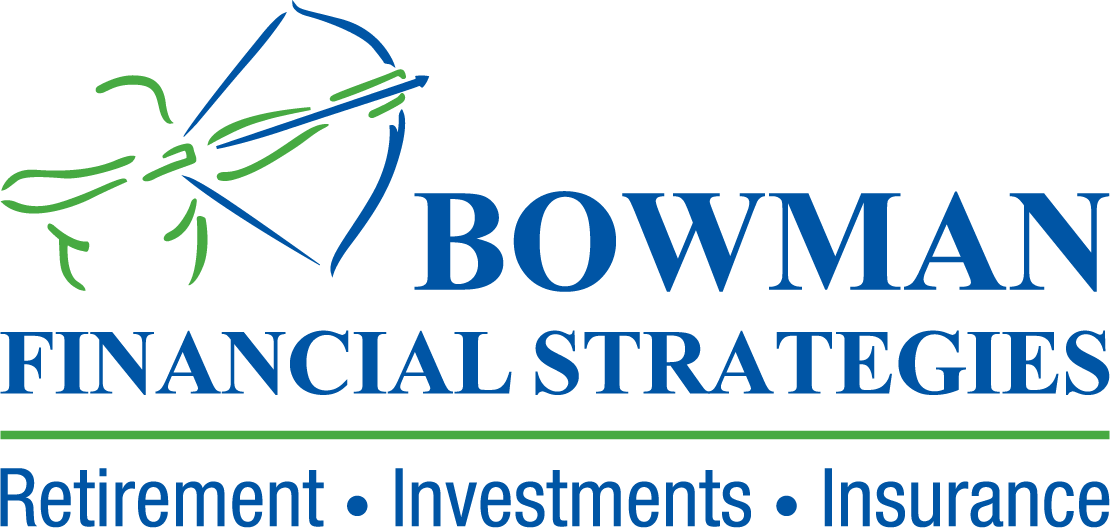Direct Indexing for Retirees: You May Be Able to Cut Taxes and Keep More in 2025
Taxes shouldn’t take the biggest bite out of your nest egg
If you’ve saved diligently for decades, the last thing you want is to see a chunk of your gains disappear each April. For retirees and pre-retirees with sizable taxable accounts, capital gains taxes and costly rebalancing can quietly reduce long-term results. Meanwhile, markets are still choppy, and policy and tax thresholds can change. In this environment, strategies that improve after-tax returns — not just pre-tax performance — matter more than ever. One approach gaining traction is direct indexing, which can open more frequent opportunities for tax-loss harvesting while keeping you invested in a diversified way.
In this article, we’ll explain direct indexing in plain English, show how it can help reduce tax drag, and outline when it may (and may not) fit a retirement plan. We’ll also discuss other familiar tools like ETFs, mutual funds, and annuities so you can make informed choices for 2025 and beyond.
What is direct indexing and how does it affect retirees?
Direct indexing is an approach where you own many of the individual stocks in an index (such as the S&P 500) instead of a single ETF or mutual fund. Because you hold the stocks directly, you (or your advisor’s software) can sell specific positions at a loss to help offset gains elsewhere — a process called tax-loss harvesting — while buying similar (not “substantially identical”) stocks to keep your market exposure. This can potentially improve after-tax returns for investors with large taxable accounts. (Schwab Brokerage)
Why this is timely for retirees in 2025
- Capital gains still matter. Long-term gains are taxed at 0%, 15%, or 20% depending on your income; higher-income investors may also owe the 3.8% Net Investment Income Tax (NIIT). That’s a meaningful drag if you routinely realize gains from rebalancing or selling high performing assets to fund retirement income. (Kiplinger)
- Frequent harvesting can add up. Academic work and large asset managers’ research suggest systematic tax-loss harvesting can potentially add roughly 1%–2% in “tax alpha” over time, especially in volatile markets — the kind we’ve seen on and off since 2020. Results vary and can’t be guaranteed, but the concept is well-studied. (CFA Institute Research and Policy Center)
- The approach is mainstream. Industry analysts project direct indexing assets could approach ~$800+ billion by 2026, reflecting broader adoption and better technology. (Cerulli Associates)
How capital gains taxes actually work in retirement (and why loss harvesting can help)
When you sell investments in a taxable account:
- Short-term gains (held ≤1 year) are taxed at your ordinary income rates.
- Long-term gains (held >1 year) are taxed at 0%, 15%, or 20% depending on your taxable income, plus a possible 3.8% NIIT above certain income thresholds ($200,000 single / $250,000 married filing jointly). (Kiplinger)
Tax-loss harvesting lets you realize losses to offset those gains dollar for dollar. If losses exceed your gains, you can generally offset up to $3,000 of ordinary income each year and carry the rest forward. The key guardrail is the wash-sale rule: if you buy the same or “substantially identical” security within 30 days before or after selling at a loss, the IRS disallows that loss. (IRS)
Plain-English analogy: Think of your portfolio like a garden. Even if the garden (the index) is thriving overall, some plants (individual stocks) wilting in the shade can be pruned (sold) to help the rest flourish by reducing the “tax weeds.” Direct indexing gives you more plants to prune individually — without tearing up the entire garden bed.
Direct indexing vs. ETFs and mutual funds
With a broad ETF or mutual fund, you own a single fund, so you can’t harvest losses from particular stocks inside it. You either sell the whole fund (which may realize gains) or do nothing.
With direct indexing, you own many of the index’s individual holdings. That means when some stocks are down — even if the overall index is up — you can selectively realize losses and swap into similar (not identical) names or a different fund in the same sector to stay invested and diversified. Done carefully, this helps preserve your asset mix while banking losses for tax purposes. Research and provider data attribute much of direct indexing’s potential 1%–2% after-tax boost to this flexibility. (CFA Institute Research and Policy Center)
Caution: compliance with the wash-sale rule matters, which is why most solutions use software to scan portfolios and implement trades methodically. (IRS)
Who tends to benefit most
Based on industry practice and the realities of trading costs and complexity, direct indexing typically works better for investors who:
- Maintain large taxable balances (often low- to mid-seven figures).
- Regularly realize gains (from rebalancing, asset sales, or concentrated positions).
- Value customization (e.g., excluding certain industries or offsetting a large single-stock holding).
- Are comfortable with modest tracking error (your return may slightly differ from the index).
Minimums and pricing vary by provider. For example, one large platform lists a $100,000 minimum with fees around 0.25%–0.40% depending on assets and program specifics. Your total cost also includes your advisory fee. (Schwab Brokerage)
A simple, real-world example
Suppose your direct indexing portfolio tracks the S&P 500. The market is up 8% this year, but within the index, Stock A is –10%. You (or your advisor’s software) can:
- Sell Stock A and realize a capital loss.
- Replace it with another automaker or a broad sector ETF (not “substantially identical”) to maintain exposure.
- Use the realized loss to help offset gains from trimming Stock B, which has grown beyond your target.
The outcome: you stay invested, your allocation remains intact, and your after-tax result may improve versus holding only a single index fund. 1
How direct indexing is implemented (and what to ask your advisor)
- Holdings selection. Most strategies hold hundreds of the largest names in an index to closely track performance while leaving room to trade.
- Loss-harvesting cadence. Some providers scan daily for opportunities — research suggests more frequent scans can capture more consistent tax-loss harvesting than occasional reviews. (ETF Database)
- Tracking error. Expect small deviations versus the benchmark — often a worthwhile trade-off for better tax management.
- Customization. You can exclude industries, tilt toward dividend payers, or neutralize a concentrated stock from your career. Leading providers highlight these uses. (BlackRock)
- Charitable gifting. You can donate highly appreciated positions to qualified charities or donor-advised funds and avoid capital gains while potentially deducting fair market value (subject to IRS rules and AGI limits). (IRS)
Where annuities, funds, and cash still fit
Direct indexing primarily targets tax efficiency in taxable equity portfolios. Many retirees still combine it with other tools as appropriate to their needs:
- ETFs/mutual funds in tax-deferred accounts for simplicity.
- Fixed annuities or income annuities to create predictable income streams that don’t depend on market returns.
- Cash/T-bills for near-term spending buckets.
The right mix depends on your income needs, risk tolerance, and tax situation. (Remember: annuities are insurance contracts with specific costs, features, and limitations; not all are right for every retiree.)
Common questions from retirees
“Are harvest losses a free lunch?”
No. Harvesting a loss lowers your tax bill now, but it
adjusts your cost basis, which can increase future gains. That said, many retirees spend harvested tax savings, donate appreciated shares, or use the time value of deferral to their advantage. (CFA Institute Research and Policy Center)
“What about the wash-sale rule?”
You generally must avoid buying the same or “substantially identical” security
30 days before/after a loss sale across
all your accounts (even IRAs). Professional oversight helps avoid mistakes. (IRS)
“Will this replace my ETFs?”
Not necessarily. Many retirees keep ETFs in IRAs/401(k)s and use direct indexing in
taxable accounts where the tax benefits are available.
“How big is this trend?”
Analysts expect direct indexing assets to grow at double-digit rates, approaching the
$800B mark by 2026, as technology lowers costs and expands access. (Cerulli Associates)
Actionable strategies to consider for 2025
- Map your “tax locations.”
List accounts by type (taxable, IRA, Roth). Direct indexing typically belongs in taxable accounts; hold broad funds or income assets where taxes are deferred. This “asset location” step helps prevent working at cross-purposes. - Set harvesting rules — and stick to them.
Ask how often your portfolio is scanned (daily vs. monthly), what loss thresholds trigger trades, and how replacement securities are chosen to avoid the wash-sale rule. Consistency is key. (ETF Database) - Coordinate rebalancing, withdrawals, and gifting.
If you’re selling high performing assets to fund spending, harvest losses first to offset gains. Charitably inclined? Consider gifting appreciated positions to a qualified charity or donor-advised fund to potentially avoid capital gains while taking a deduction (subject to IRS rules). (IRS) - Right-size the solution.
Direct indexing involves added complexity and fees. Review minimums and pricing; many programs start around 0.25%–0.40% of assets, often declining at higher balances. Confirm total costs, including your advisory fee. (Schwab Brokerage) - Plan for “what-ifs.”
Ask your advisor to model tracking error, potential tax alpha ranges, and what happens in up and down markets. Discuss coordination with other retirement pieces you may own — such as annuities for income or bond ladders for spending — so the whole plan works together.
Key takeaways
- Direct indexing gives retirees more ways to harvest losses and help improve after-tax returns without abandoning diversification. (Schwab Brokerage)
- Taxes can materially reduce returns; long-term gains are 0%/15%/20%, and higher earners may owe the 3.8% NIIT. Know your bracket. (Kiplinger)
- The approach is mainstream and growing, aided by better software and lower minimums. (Cerulli Associates)
- It’s not one-size-fits-all: weigh costs, minimums, and tracking error against expected tax benefits. (Schwab Brokerage)
- In 2025, proactive, tax-aware planning can help you keep more of what you’ve earned.
References (selected)
- IRS, Publication 550—Investment Income and Expenses (2024) (wash-sale rules and reporting). (IRS)
- IRS, Topic No. 559—Net Investment Income Tax (NIIT) (3.8% thresholds). (IRS)
- Kiplinger, Long-term capital gains thresholds for 2025 (rate bands). (Kiplinger)
- Chaudhuri, Burnham & Lo (2020), Financial Analysts Journal — An Empirical Evaluation of Tax-Loss-Harvesting Alpha. (CFA Institute Research and Policy Center)
- Vanguard & Parametric, industry research on potential 1%–2% after-tax alpha from active tax management. (Vanguard Advisors)
- Cerulli Associates, Direct Indexing adoption outlook (assets projected near $825B by 2026). (Cerulli Associates)
IRS, Publication 526—Charitable Contributions (stock gifting rules and limits). (IRS)
Important information & disclosures
This material is for informational purposes only and is not tax, legal, or investment advice. Investing involves risk, including loss of principal. No investment strategy, including diversification or direct indexing, can ensure a profit or guarantee against losses. Direct indexing strategies may not be appropriate for all investors and can result in tracking error versus the chosen benchmark. Tax outcomes depend on individual circumstances and may change with future tax law. Consult a qualified tax professional about your situation. (It is not possible to invest directly in an index.)
Investment Advisory Services offered through CreativeOne Wealth, LLC, an SEC-registered investment adviser. CreativeOne Wealth, LLC and Bowman Financial Strategies are unaffiliated entities. We are not affiliated with or endorsed by any government agency, and do not provide tax or legal advice. Licensed insurance professional. Insurance and annuity guarantees are backed by the financial strength and claims-paying ability of the issuing company.
Investment advisory services are provided in accordance with a fiduciary duty of care and loyalty that includes putting your interests first and disclosing conflicts. Insurance services have a best interest standard which requires recommendations to be in your best interest. Advisors may receive commission for the sale of insurance and annuity products.
1. Hypothetical example shown for illustrative purposes only, is not guaranteed and does not reflect any specific stock investment.


